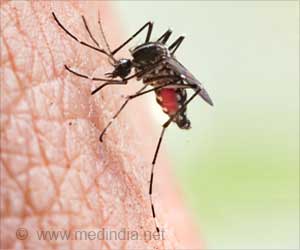People who were living among the Oil And Gas Wells were found to be at an Increased Risk Of Heart Disease. Particulate matter emitted from oil and gas operations is suspected to be associated with it.

‘Short and long-term exposure to the kinds of particulate matter that are emitted from oil and gas operations have been associated with increases in cardiovascular disease and death in previous studies
’





"We are not sure whether the responsible factor is noise or emissions from the well pads or something else, but we did observe that with more intense oil and gas activity around a person's home, cardiovascular disease indicator levels increased," said the study's lead author Lisa McKenzie, PhD, MPH, of the Colorado School of Public Health at the University of Colorado Anschutz Medical Campus.From Oct. 2015 to May 2016, the researchers measured indicators of CVD in 97 men and women from Fort Collins, Greeley, and Windsor who did not smoke tobacco or marijuana. The participants did not have jobs that exposed them to dust, fumes, solvents or oil or gas development activities.
None had histories of diabetes, chronic obstructive pulmonary disease or chronic inflammatory diseases like asthma or arthritis. CVD is the leading cause of mortality in the U.S. with more than 900,000 deaths in 2016.
"While behavioral and genetic factors contribute to the burden of CVD, exposure to environmental stressors, such as air pollution, noise, and psychosocial stress also contribute to cardiovascular morbidity and mortality," according to the authors.
One increasingly common source of these stressors is the extraction of oil and gas in residential areas. Advances in fracking, horizontal drilling, and micro-seismic imaging have opened up many previously inaccessible areas for exploration. Some of those wells are in heavily populated areas.
Advertisement
Previous studies have shown that short and long-term exposure to the kind of particulate matter emitted from oil and gas operations may be associated with increases in cardiovascular disease and death.
Advertisement
This study is the first to investigate the relationship between oil and gas development and CVD. But the results are consistent with an increase in the frequency of cardiology inpatient hospital admissions in areas of oil and gas activity in Pennsylvania.
"Our study findings support the use of these indicators of cardiovascular disease in future studies on oil and gas development in residential areas," McKenzie said.
Those indicators included blood pressure, arterial stiffening and early markers of inflammation.
McKenzie acknowledged the limitations of the small sample size, saying that the results demonstrate the need for a much larger study.
Source-Eurekalert














